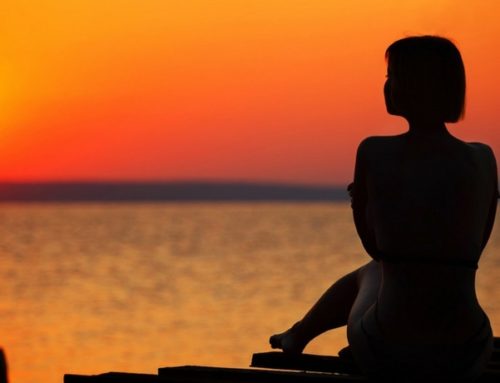There’s something that just makes you feel good about spending time outdoors in the sun but too much of a good thing can be dangerous. There are risks associated with too much sun exposure. One of the most common problems that can develop from too much time in the sun is sunburn. Believe it or not there are good and bad aspects to sunburns.
Read on to discover what a sunburn is, how to treat one and better yet how to avoid a sunburn all together.
Your Skin’s Natural Defense
 How could a sunburn be good? Well, it’s your skin’s way of protecting you from more severe damage. [1]Skin exposed to Ultra Violet radiation or (UV) can result in a sunburn in as little as ten minutes. When you experience a sunburn you’re actually seeing your skin’s self-defense plan in action. As your skin is exposed to UV radiation it begins working to protect deeper layers and DNA at a cellular level.
How could a sunburn be good? Well, it’s your skin’s way of protecting you from more severe damage. [1]Skin exposed to Ultra Violet radiation or (UV) can result in a sunburn in as little as ten minutes. When you experience a sunburn you’re actually seeing your skin’s self-defense plan in action. As your skin is exposed to UV radiation it begins working to protect deeper layers and DNA at a cellular level.
The first line of defense is to dilate blood vessels near the surface which causes the redness we’ve all experienced or seen before. Next, the skin loses moisture and begins to tighten, as it does skin cells begin to thicken and produce melanin in an attempt to stop further damage.
Different Degrees of Sunburn
There are varying degrees of sunburn depending upon the amount and intensity of UV exposure. Minor burns may cause redness and minor discomfort, while more severe burns can cause blistering and in extreme cases may even require hospitalization.
Often the first signs of a burn are not immediately noticeable however redness and pain may develop over several hours and / or days. When you’re dealing with a sunburn you may experience pain, soreness, nausea, chills, itching and peeling skin. [2]Repeated exposure, resulting in sunburn, can increase your risk for other skin damage and certain diseases including skin cancer.
Sun Burn Treatment
According to [3] WebMd there are several recommended treatments for sunburn which vary based on the severity of the burn.
Call 911 for emergency help if the person:
- Does not seem to be responding appropriately
- Has a seizure, visual changes, or any other neurologic symptoms; these could be symptoms of severe heat illness.
Call a Health Care Provider if the person:
- The burn has blisters or the skin is white-appearing or numb. These are symptoms of a more-serious sunburn.
- The sunburned person is a child under one year old.
For less severe sunburns:
- Re-hydrate and replace body fluids with water and/ or electrolytes
- To soothe and cool skin, take a cool bath or shower or apply cool compresses to the area.
- For pain, take ibuprofen (Advil, Motrin) or acetaminophen (Tylenol).
- If blisters form, don’t break them.
- Protect your skin from further sun exposure.
Be Proactive
The best way to avoid the pain and discomfort of a sunburn is to reduce direct UV radiation exposure. The strength of sunlight is published in many locations as a UV Index. [4] The World Health Organization recommends limiting your midday summer sun during the hours of 10am to 4pm, consult the UV index, wear protective clothing and use sun screen.
“Apply a broad-spectrum sunscreen of SPF 15+ liberally and re-apply every two hours, or after working, swimming, playing or exercising outdoors.” – http://www.who.int/uv/sun_protection/en/
Conclusion
So while sunburns do serve a purpose it’s really better to have fun in the sun and take the proper precautions to avoid prolonged exposure. However, if your summer adventures result in a sunburn assess the severity and treat as recommended.
For minor sunburns, insect bites and other minor skin irritations we recommend Dr. Greenfield’s Burn N Bite with Lidocaine and Aloe.
Resources
- http://www.dermalogica.com/what-is-a-sunburn%3F/ys_skinaging_4,default,pg.html
- http://www.mayoclinic.org/diseases-conditions/sunburn/basics/definition/con-20031065
- http://www.webmd.com/first-aid/sunburn-treatment
- http://www.who.int/uv/sun_protection/en/
Disclaimer: SelfCare Plus sells Dr. Greenfield’s Burn N Bite product direct to consumers.




